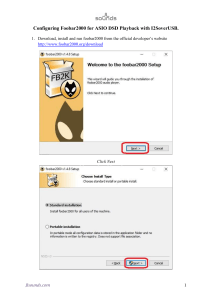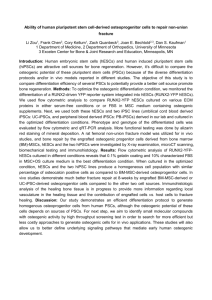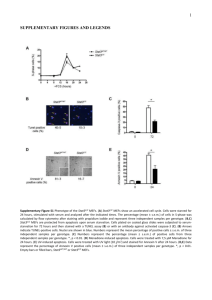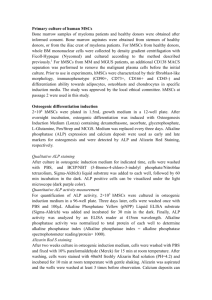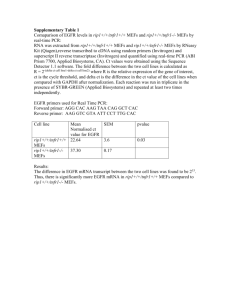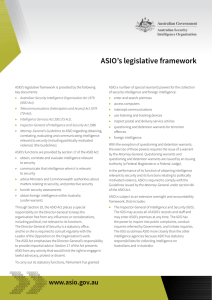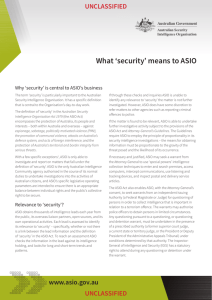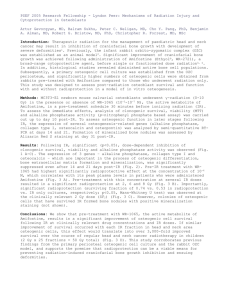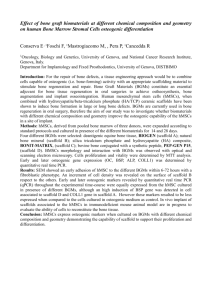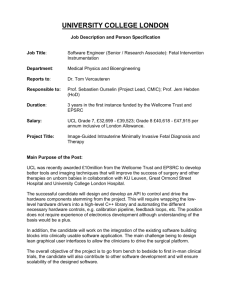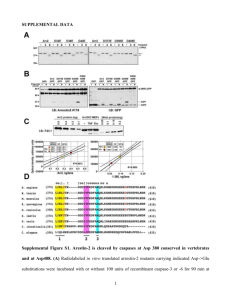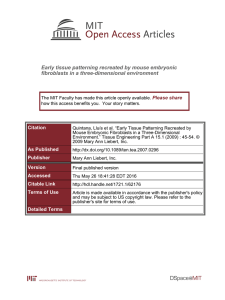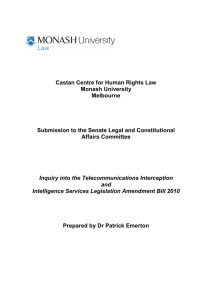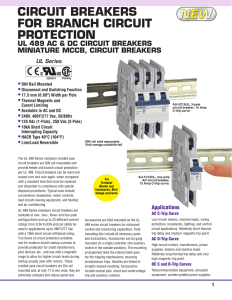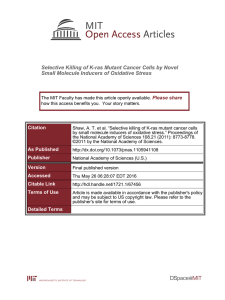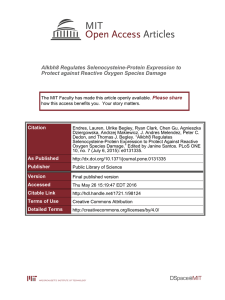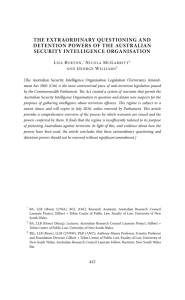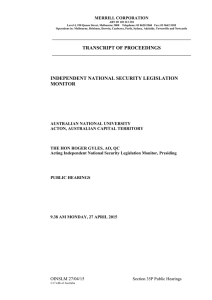Supplementary Figure Legends (doc 68K)
advertisement
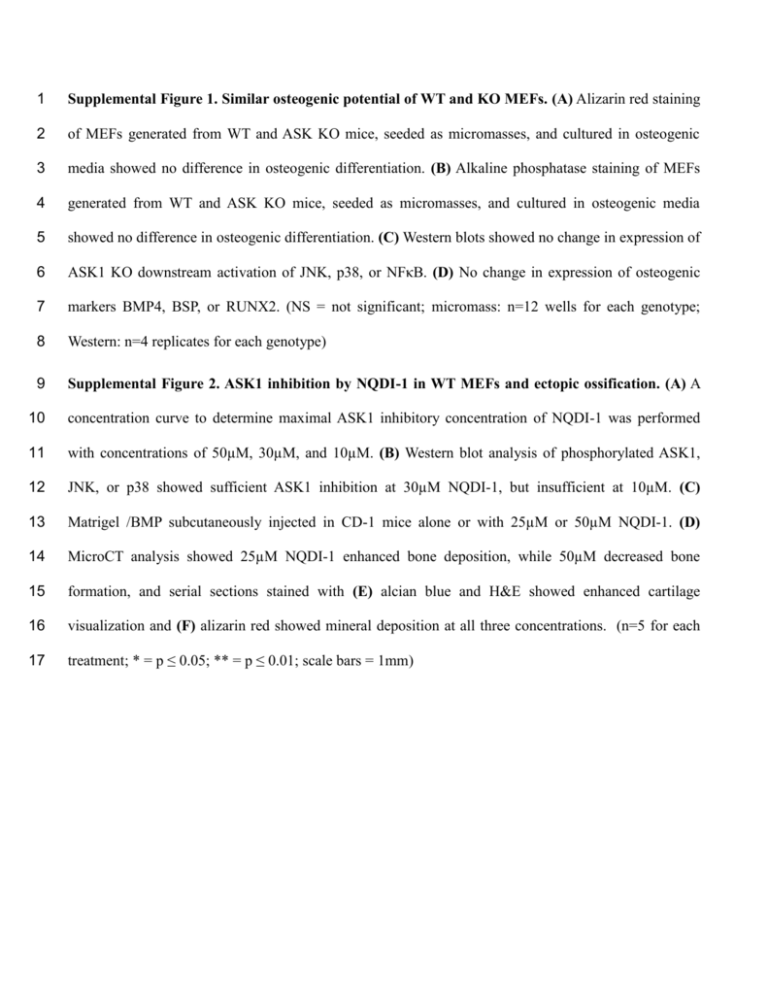
1 Supplemental Figure 1. Similar osteogenic potential of WT and KO MEFs. (A) Alizarin red staining 2 of MEFs generated from WT and ASK KO mice, seeded as micromasses, and cultured in osteogenic 3 media showed no difference in osteogenic differentiation. (B) Alkaline phosphatase staining of MEFs 4 generated from WT and ASK KO mice, seeded as micromasses, and cultured in osteogenic media 5 showed no difference in osteogenic differentiation. (C) Western blots showed no change in expression of 6 ASK1 KO downstream activation of JNK, p38, or NFκB. (D) No change in expression of osteogenic 7 markers BMP4, BSP, or RUNX2. (NS = not significant; micromass: n=12 wells for each genotype; 8 Western: n=4 replicates for each genotype) 9 Supplemental Figure 2. ASK1 inhibition by NQDI-1 in WT MEFs and ectopic ossification. (A) A 10 concentration curve to determine maximal ASK1 inhibitory concentration of NQDI-1 was performed 11 with concentrations of 50µM, 30µM, and 10µM. (B) Western blot analysis of phosphorylated ASK1, 12 JNK, or p38 showed sufficient ASK1 inhibition at 30µM NQDI-1, but insufficient at 10µM. (C) 13 Matrigel /BMP subcutaneously injected in CD-1 mice alone or with 25µM or 50µM NQDI-1. (D) 14 MicroCT analysis showed 25µM NQDI-1 enhanced bone deposition, while 50µM decreased bone 15 formation, and serial sections stained with (E) alcian blue and H&E showed enhanced cartilage 16 visualization and (F) alizarin red showed mineral deposition at all three concentrations. (n=5 for each 17 treatment; * = p ≤ 0.05; ** = p ≤ 0.01; scale bars = 1mm)
